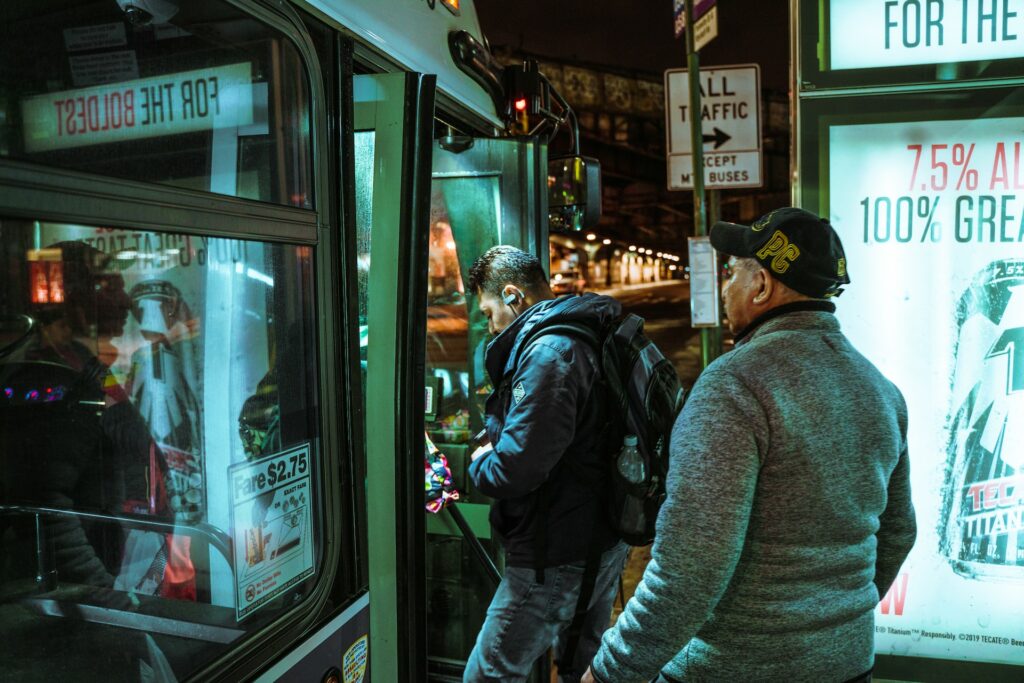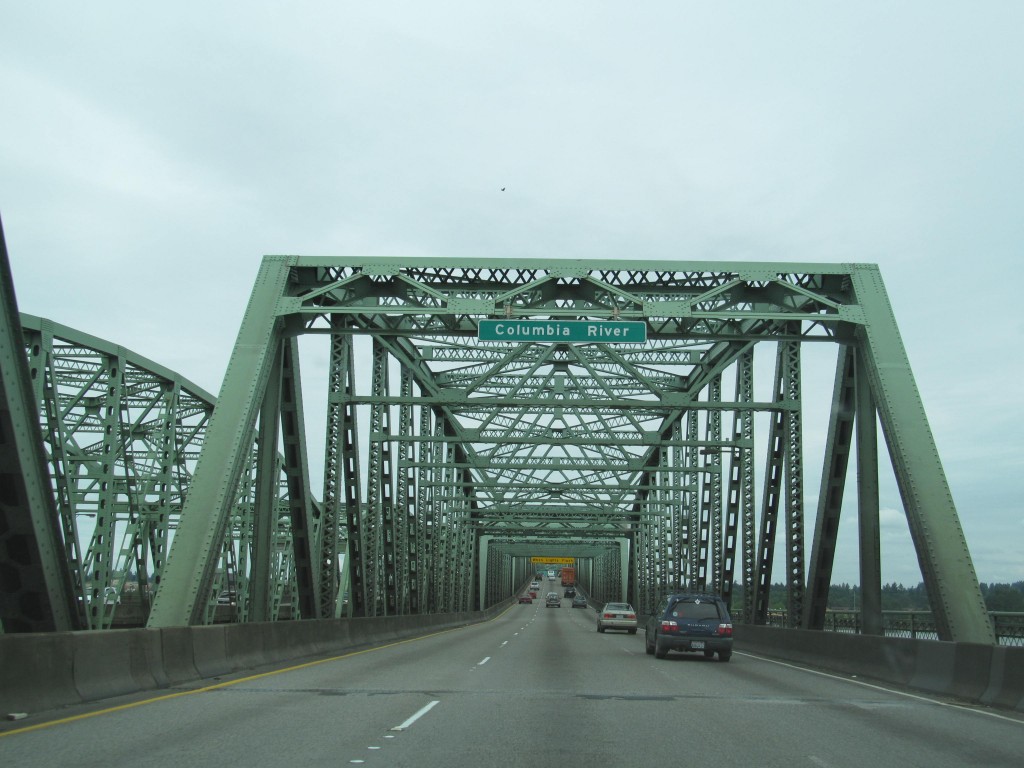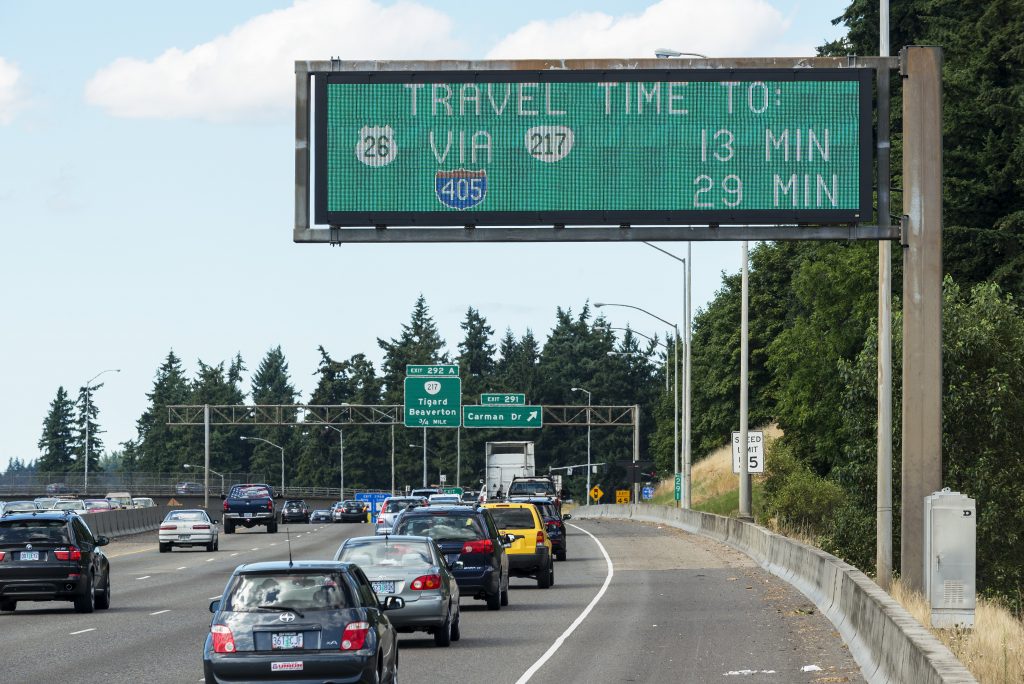
Oregon’s attempt to raise new state funding for transportation is coming down to the wire

The Oregon legislature has just two weeks left to vote on a transportation package that — in addition to funding highway maintenance and expansion — takes steps to significantly fund transit, safe routes to school and implements forward thinking strategies like congestion pricing and active transportation management.

Flickr photo by Oregon DOT. https://www.flickr.com/photos/oregondot/15035881385
Update: 7/6/17: A deal was struck by legislators and approved in the Oregon House and Senate this week. More details here in this newer post.
The Co-Chairs and Co-Vice Chairs of Oregon’s Joint Committee on Transportation Preservation and Modernization Committee (JTPM) have been negotiating the details of HB 2017 while a constitutionally mandated end-of-session ‘sine die’ on July 10 looms. This committee was formed last year to develop a transportation package for the 2017 legislative session, and has conducted a tour of state to gather input and convened many meetings to develop and flesh out the details of the package over the course of this past year.
The package has too many moving parts to describe in this post, but here are five notable elements to Oregon’s proposal:
1) Five diverse sources of revenue
To raise new transportation funds, the proposal includes traditional mechanisms like gas tax and registration fee increases, and not-so-traditional ones like an excise tax on bicycle sales, employee payroll taxes and congestion pricing. These sources are so diverse in part because of a strong interest from legislators in seeing different user groups have ‘skin in the game,’ and because Oregon’s constitution prohibits any motor vehicle-related user fees from being used on transit, off-road paths, or non-highway freight infrastructure. Add in new tolls and there are actually six sources of revenue contained in the legislation.
2) It includes significant funding for transit operations
The state of Oregon pays only about 3 percent of the cost of operating the numerous transit systems in the state while nationally, states cover about 24 percent of transit operations. A new 0.1 percent statewide payroll tax on employees would significantly change that, dedicating 85 percent of the projected $107 million it would raise toward transit operations annually. This would bolster transit service in small towns and large cities across the state, improving access to jobs and other services, and making the state a valuable partner in running the multimodal transportation networks that are vital to the state’s prosperity.
3) Freeway widening is not the only congestion solution offered
Like other recent state transportation funding packages, Oregon’s includes funding for freeway expansion — including freeway projects intended to address three specific bottlenecks in the Portland region. But an earlier presentation outlining the proposal also acknowledges the limitations of this approach, noting that we “cannot tax our way out of congestion” and “cannot build our way out of congestion relief.” The bill calls upon the Oregon Transportation Commission (OTC) to implement — where possible — pre-construction tolling, congestion pricing, “zip lanes” (we take this to mean high occupancy toll (HOT) lanes) and active traffic management. While the benefits of freeway widening are often lost to induced demand, congestion pricing can more effectively address congestion if coupled with investments in other traffic-reducing travel options like transit.
4) A “Regional Increment”
The biggest congestion challenges in Oregon are in the Portland metropolitan region. While business interests around the state are concerned about congestion in Portland since they move their goods through this port city and economic hub, it’s still a tough sell for the rest of the state to pay for big freeway projects in Portland. To solve this politically and financially, the package levies an additional “regional increment” on the Portland region with higher gas taxes, registration fees and title fees, and dedicates that funding to projects in the Portland region. This helps Portland fund its big projects and holds together political support from rural, more tax-averse parts of the state.
5) Significant discussion on accountability
We’ve written before about Oregon Department of Transportation’s (ODOT) effort to regain public trust.
“While the agency is respected for innovative programs like ConnectOregon’s competitive grants and a strong commitment to fix-it-first principles, it has stumbled occasionally as well, including the failure to win support for the problematic Columbia River Crossing mega-project, massive cost overruns on a rural highway project in the landslide-prone coastal mountains, and ill-timed miscalculation of carbon emissions estimates related to failed 2015 transportation investment legislation.”
Legislators are anxious to show the public that they can improve transparency and accountability in this bill. The proposal calls for giving the Oregon Transportation Commission greater power and capacity to oversee the Oregon Department of Transportation. It also calls for cost/benefit analysis of future projects and communicating construction progress on an improved website.
We expect new amendments to be released this week as the legislature races to complete its work before the deadline.



